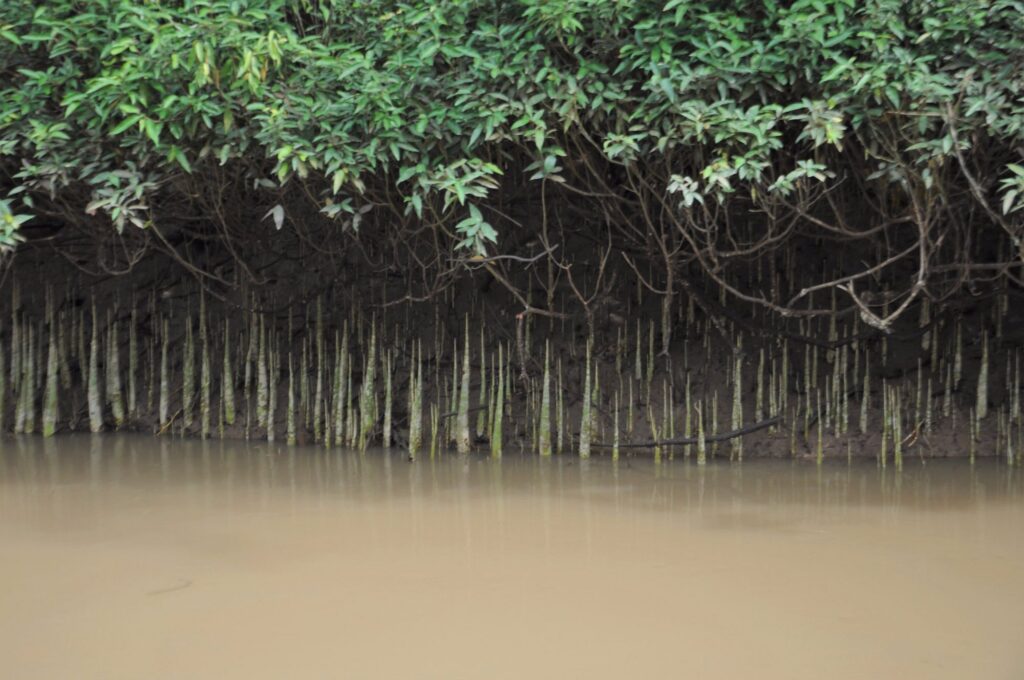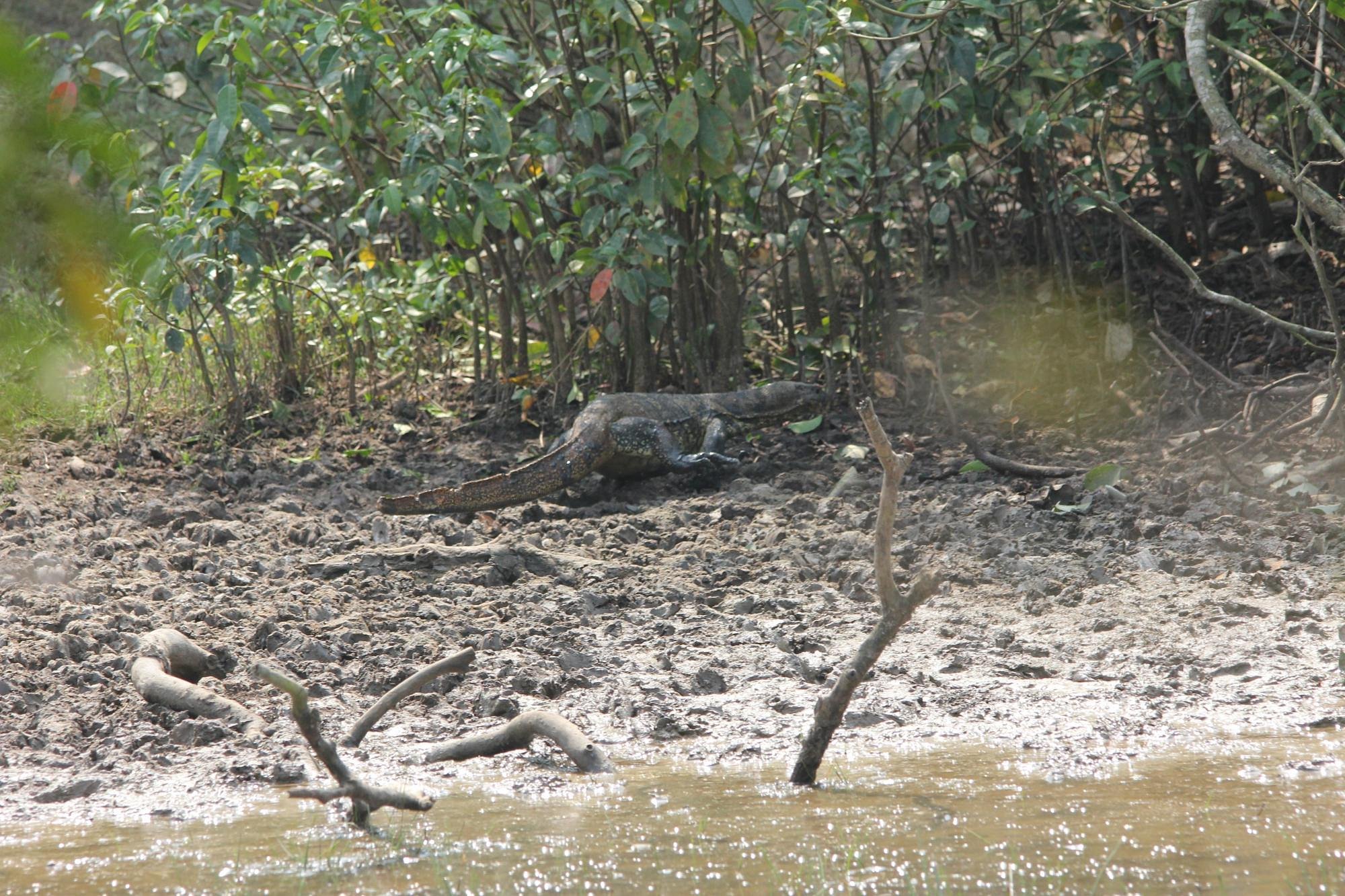If there’s one thing I’ve learned from my travels, it’s that India hides its best gems in places you least expect. Tucked away in the Kendrapara district of Odisha, Bhitarkanika National Park was one of those unexpected delights – an offbeat jungle paradise where saltwater crocodiles lurk silently, deer tiptoe through mangroves, and kingfishers flash blue across muddy creeks. It’s wild, beautiful, and honestly, a little bit magical.
I’d heard of Bhitarkanika National Park through a random travel forum post, sandwiched between threads about Goa and Manali. What caught my eye was the photo of a massive crocodile basking on a muddy bank – menacing yet majestic. That’s when I knew I had to see it for myself.
Before we move forward, if you are looking to travel please book your hotels and flights through this link. You will get exclusive discounts & I will be able to earn a small commission that will help me keep this site up & running.
Reaching Bhitarkanika National Park: The Adventure Begins
Reaching Bhitarkanika isn’t as straightforward as catching a flight and calling a cab. And that’s part of the charm.
My journey started in Bhubaneswar, the capital of Odisha. From there, it was a 4-5 hour drive to a small village called Khola, one of the main entry points to the park. You can also reach via Gupti or Dangmal, depending on where you’re staying. The roads were decently paved, peppered with paddy fields, sleepy villages, and the occasional sight of cattle nonchalantly blocking traffic.
Pro tip: Hire a local taxi or a travel operator who knows the area. Google Maps is helpful, but a human GPS who understands Odiya and knows when to dodge potholes is even better.

Where I Stayed: Rustic But Real
I opted for a stay at the Eco-Cottages near Dangmal, run by the forest department. It was basic – clean beds, mosquito nets, solar-powered lights, and home-cooked meals – but completely in sync with the jungle vibe. There are also a few private lodges around Gupti and Khola if you prefer slightly more polished digs.
If you’re a fan of air-conditioning, room service, and Netflix-in-bed – this might not be your place. But if you love the idea of waking up to bird calls and falling asleep to the distant croak of frogs, Bhitarkanika National Park is a dream.
The First Boat Ride: Into the Green Maze
The real fun began when we stepped onto our little motorboat at the Khola jetty. It was just me, a couple from Kolkata, a cheerful boatman named Suresh, and a guide who looked like he knew every bend of the river.
As we cruised into the mangrove creeks, the landscape changed dramatically. Tall mangrove roots jutted out like wooden stilts, the water turned a shade darker, and everything felt still. It was quiet, eerily so, except for the occasional splash of water or the rustle of a bird taking flight.
And then, we saw our first crocodile.
It was huge. Probably around 15 feet, just lying there on a mudbank like a sunbathing dragon. Our guide whispered, “Saltwater crocodile. Maybe 40 years old.” I didn’t need a close-up, I was perfectly happy admiring from a distance, thank you very much.
Over the next hour or two, we spotted at least 10 more crocodiles. Some slid quietly into the water when we got close. Others stared back, expressionless. I couldn’t help but feel a mix of awe and nervous excitement. These weren’t zoo animals behind glass. These were real, wild predators in their home turf.
Wildlife Galore: More Than Just Crocs
While the crocodiles were the star attraction, Bhitarkanika surprised me with its diversity.

We saw spotted deer grazing in the shade, monitor lizards slithering along muddy banks, and wild boars trotting through the underbrush. But the birds—oh, the birds! Kingfishers, egrets, herons, brahminy kites—it was like a live episode of National Geographic. If you’re a birder, this place is gold.
The guide explained that Bhitarkanika National Park is home to over 270 species of birds, including migratory visitors from Central Asia and Europe during the winter months. From September to March, the park turns into a birding paradise.
A Walk Through Dangmal Forest
Later that afternoon, we took a guided nature walk through Dangmal, one of the core areas of the park. The forest trail was lush and shaded, with tangled roots and thick canopies overhead. You don’t realize how dense and alive a mangrove ecosystem is until you’re walking through it.
There’s also an interpretation center at Dangmal with exhibits on the local flora and fauna. It’s a good place to understand the ecological significance of the region – and to take a break from the heat if you’re visiting in summer.
And yes, we came across more crocodiles lounging in man-made ponds near the center. One of them, the guide told us, was named “Gori,” a legendary croc known to be over 20 feet long. I didn’t measure, but judging by the way the ground seemed to tremble under her bulk, I wasn’t going to argue.
Sunset on the River
One of the most peaceful moments of the trip was during a late afternoon boat ride. The golden sun was setting, casting warm reflections on the water, and the entire mangrove forest seemed to glow. A couple of deer stood at the edge of the creek, half-hidden in the shadows. A kingfisher dove in with a splash. Everything slowed down.
It’s one of those moments where you forget your phone, forget the urge to take photos, and just sit back, quietly thankful that places like this still exist.
A Few Handy Tips
If you’re thinking of visiting Bhitarkanika National Park – and you should! – here are some practical takeaways from my trip:
- Best Time to Visit: October to March is ideal. The weather is pleasant, the crocs are more visible, and migratory birds are around.
- Permits: You’ll need entry permits, which can be arranged at the entry points or through your stay. Carry a valid ID.
- What to Carry: Sunglasses, hat, sunscreen, mosquito repellent, binoculars, and a decent camera if you’re into wildlife photography.
- Clothing: Light cottons for the day, a jacket for the cool evenings, and sturdy shoes for forest walks.
- Stay Connected: Mobile network is spotty. Enjoy the digital detox.
Why Bhitarkanika Stays With You
As I packed up to leave the next morning, a dense fog hung low over the water. The forest was still, almost holding its breath. I thought back to the crocodiles, the deer, the birds, and the maze of creeks we had floated through. Bhitarkanika wasn’t just a national park – it was a living, breathing world of its own.
It doesn’t have the tourist buzz of Ranthambore or the Instagram fame of Jim Corbett. But that’s exactly what makes it special. It’s wild in the truest sense – untamed, untouched, and unbothered.
If you’re someone who likes your travels a little offbeat, a little mysterious, and deeply immersive, then Bhitarkanika National Park should be high on your list.
Just be prepared – you might leave a piece of your heart somewhere in those mangroves.
Have you been to Bhitarkanika National Park or are planning a visit? Drop your questions or experiences in the comments below. I’d love to hear your wild stories!
My Other Posts
If you are looking for options in Kashmir, check out my posts on Pahalgam, Gulmarg, Snowfall in Kashmir, and Best Time to Visit Kashmir. If you are looking for options in Ladakh, check out Ladakh Weather, Nubra Valley, 5 Days Kashmir Itinerary, Best Packing tips for Ladakh & best tourist places in Ladakh.
If you are looking for something in Sikkim, check Tsomgo Lake, Nathu La Pass, Baba Harbhajan Singh Mandir and Batasia Loop. If you are looking for some jungle safari read Gir Safari, or Bandipur Safari, feel blessed at Sri Venugopala Swamy Temple in Mysore.
If you are looking for places to visit in the Andaman Islands, please check my posts on Radhanagar Beach & Ross Island.
If you are looking for other options, check my posts on Murud Janjira, Kashid, Pirwadi Beach and Kihim Beach in Maharashtra or Malshej Ghat, Matheran Resorts, Kailash Temple Ellora, Vandri Lake, Kelwa Beach in Palghar & Mahabaleshwar.
Alternatively, if you are interested in some Religious tourism, please check my posts on Golden Temple, Kamakhya, Trimbakeshwar, Somnath Temple, Kalighat Temple, Dakshineswar Temple and Kashi Vishwanath. If you are looking for North East Adventure tours, check my posts on Shillong, Meghalaya, Dawki, Double Decker Living Root Trek, and 7-Day North East Itinerary

